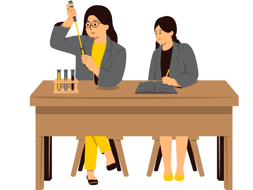Most of the time, trisomy 13 happens because a baby has three copies of chromosome 13 in each cell of the body (instead of the usual two copies). This form of trisomy 13 generally happens by chance and is not passed down in the family.
Trisomy 13 (Patau Syndrome)
What is trisomy 13?
Trisomy 13 (also called Patau syndrome), is caused by an extra copy of chromosome 13. Babies with trisomy 13 have three copies of this chromosome, instead of the typical two copies.
How does trisomy 13 happen?
The extra chromosome 13 generally happens by chance in the sperm or the egg that makes the baby. Trisomy 13 does not generally run in families.

Chromosomes in the cell of a person with trisomy 13 - Illustration adapted from Genetic Counseling Aids, 7th Edition, Copyright 2020, permission for use granted by Greenwood Genetic Center
What does trisomy 13 mean for a baby?
Having an extra chromosome 13 affects how different parts of the body grow and form. Many pregnancies with trisomy 13 result in miscarriage or later pregnancy loss (stillbirth). If born alive, babies with trisomy 13 usually have severe intellectual disability and health problems. Babies can go home to their families but require a lot of caregiving. A small number of babies with trisomy 13 can live past the first year of life.
How often does trisomy 13 happen?
About 1 in 6,000 to 1 in 29,000 babies are born with trisomy 13. Although trisomy 13 can happen at any age, the chance increases as the pregnant person gets older.
Can trisomy 13 be detected during pregnancy?
There can be signs for trisomy 13 during the pregnancy. Diagnostic testing can then be done so that you know for sure whether or not the baby has trisomy 13.
| Prenatal screening tests

You might choose to have Non-Invasive Prenatal Testing (NIPT) as a prenatal screening test in your pregnancy. This test can tell you the chance for having a baby with trisomy 13. NIPT is covered by OHIP in certain situations.
In Ontario, other OHIP-funded screening tests do not check for trisomy 13.
| Ultrasound
The extra chromosome 13 can cause a wide range of physical problems (sometimes referred to as birth defects). Most babies with trisomy 13 will have concerns seen on the 18-22 week (detailed anatomy) ultrasound, and sometimes even on earlier ultrasounds. These include:
- The brain not developing properly into a right and left side (holoprosencephaly)
- The organs in the abdomen developing outside the belly and sticking out through an opening in muscles in the area of the umbilical cord (omphalocele)
- Incomplete closure of the lip or roof of the mouth during development (cleft lip and palate)
- Spinal abnormalities
- Heart defects
- Differences in the development of the hands or feet (e.g. extra fingers or toes)
- Kidney abnormalities (e.g. multiple cysts in the kidneys; or abnormal union of the two kidneys at the base )
Birth defects can be caused by many different conditions, not just trisomy 13. You should be offered a referral for genetic counselling to discuss your results further and options for more testing.
| Diagnostic testing
Although the above tests can tell you there is an increased chance for the baby to have trisomy 13, the only way to know for sure is through a diagnostic test. This testing can be done by looking at cells from the placenta (chorionic villus sampling) or from the fluid around the baby (amniocentesis).
Some people do not wish to have diagnostic testing during the pregnancy. Diagnostic testing can be done after birth by getting a bit of blood from the umbilical cord, or through a regular blood draw from the baby.
Types of trisomy 13
There are different types of trisomy 13 that can happen:
Rarely, some babies with trisomy 13 have an extra copy of chromosome 13 in only some of the body's cells. These babies have a mixture of cells: some cells have the typical two copies of chromosome 13, and other cells have three copies. The impact of having this extra genetic material on a baby's development varies widely and depends on the number of cells that have the extra chromosome 13. Mosaic trisomy 13 happens by chance and is not passed down in the family.
In individuals with a translocation form of trisomy 13, part of chromosome 13 becomes attached (translocated) to another chromosome. These individuals have two separate copies of chromosome 13 plus extra material from chromosome 13 attached to another chromosome, resulting in three copies. This type of trisomy 13 is less common and can sometimes be passed down from a healthy parent.
More information
You can get more information from other medical and Trisomy 18/13 organizations. These can be helpful resources when looking for a range of views on having this chromosome difference.
- Regional Genetics Centres
- Genetics Home Reference
- SOFT – Support Organization for Trisomy 13, 18 and related disorders
- International Trisomy 13/18 Alliance
Contact Us
Prenatal Screening Ontario
CHEO Research Institute
Centre for Practice-Changing Research Building
401 Smyth Road
Ottawa, ON K1H 8L1
Information line
Phone: 613-737-2281
Toll-Free: 1-833-351-6490
Monday to Friday, 9:00 AM to 3:00 PM EST
Subscribe to PSO Updates
Subscribe to stay informed with the latest PSO news and prenatal screening updates in Ontario.
